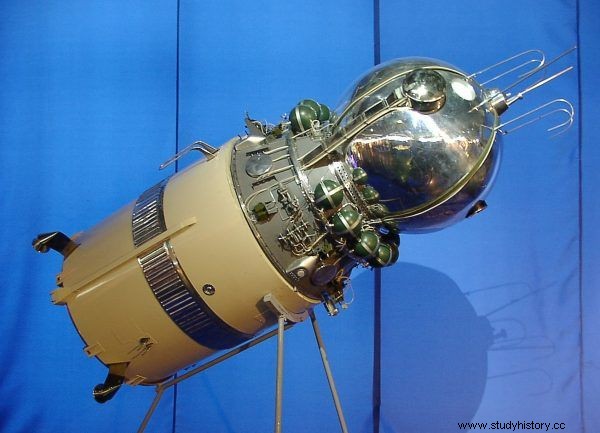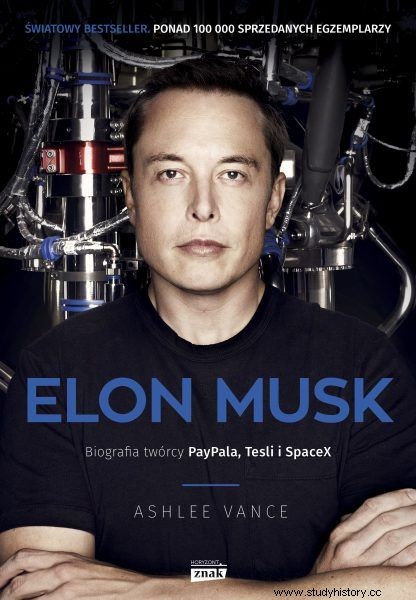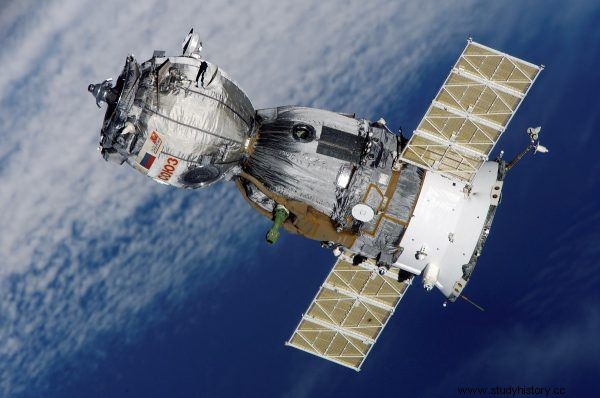Elon Musk wanted easy online payments, so he invented PayPal. When he wanted an electric car, he brought Tesla to life. Now it is revolutionizing space flight. His vision is on a par with the greatest pioneers of the past decades. Among them was also a man whose path to fame and billion-dollar fortune was blocked by only one fact. He was unlucky to live in the Soviet Union.
At the moment, Musk's flagship design seems to be taking two steps forward and one step back. The Dragon capsule, which is used to transport cargo for the International Space Station (ISS), was a success, but the recovery of the spent Falcon stage has only been successful once.
Musk, however, is a man who pays no attention to such obstacles. In this respect, the businessman has something in common with the father of Soviet cosmonautics , Sergei Korolev. However, unlike the creator of SpaceX, the name of his predecessor remained known for a long time only to a small group of specialists and to the top of the CPSU.
Constructor from Zhytomyr
Sergey was born in 1907 in Ukraine. After receiving training in design, he started working in the Tupolev office. In the early 1930s, he founded the Jet Movement Research Group, which was later transformed into a research institute.

Sergei Korolev after his arrest in 1938. Date of birth in the photo according to the Julian calendar (photo:public domain).
As part of these activities, in the years 1936–1937 he introduced a solid-fuel rocket for testing. The first streak of successes was interrupted by the great purge . In 1938, Korolev was sent to a labor camp, where, fortunately, he worked in the so-called shades, a prison for specialists.
The constructor returned to favor in 1944. With the seizure of materials on the Nazi rocket program, the Soviet Union intensified its own work in this area. Ukrainian engineer became one of the most important people in the development of this field.
Korolev began work on intercontinental missiles, but he aimed further and higher - he wanted to send a man into space. It was he who was responsible, among other things, for persuading the Soviet authorities to take a step in this direction, arguing it with the prestige that winning the space race with the imperialist States would bring.
In 1956, the scientist finally got his way and was appointed head of the Soviet space program. Since then, not only his actions, but also his person, have been kept secret. Rumor has it that even Sergei's mother did not know that her son was responsible for sending cosmonauts into orbit .

R-7 rocket designed by Sergei Korolev, photo:Sergei Arssenev. CC BY-SA 4.0).
The great plans of the Russians
The office led by Korolev, OKB-1, gave the Soviet Union an R-7 missile. On its basis, the Wostok rocket and its derivative Woschod were created, designed to launch into orbit manned spacecraft with similar names. It was Korolev's greatest success - the first of many victories in the race against the USA.
After the successful mission of Gagarin in the constructions conceived in the head of the brilliant Soviet engineer, the first orbital flight lasting 24 hours, the joint flight of two vehicles and the first flight of a woman were made. Finally, there was the first multiplayer flight and the first human departure into open space.
Cosmonaut Alexei Leonov perfectly reflected the nature of the works of the Ukrainian visionary, saying about his flight: I went out first, where no one has ever been . The father of the Soviet space program could have said the same about himself. Its designers reached where people always wanted to reach - to the stars.

Model of the ship Vostok 1, in which Jurij Gagarin made his pioneering flight (photo:Benutzer:HPH, CC BY-SA 3.0).
Korolev did not stop at these successes. He began work on organizing an expedition to the moon. It was supposed to be the first stop on a much further journey: OKB-1 was also working on plans for flights to Mars and Venus . From 1959, among others, a vessel of the TMK project capable of such a voyage and the MaWr (Mars-Venera) program was created for a manned flyby of these two planets.
This article has more than one page. Please select another one below to continue reading.Attention! You are not on the first page of the article. If you want to read from the beginning click here.
The Americans turned out to be faster in the race for the Silver Globe and they were beaten by the USSR. However, it was a shard of the failed Soviet program that gave the Russians Soyuz. And this one is called the "workhorse of astronautics" for a reason. Since its debut in 1967, it has been working continuously until today.
Astronautics workhorse
The project was launched in 1964. Soyuz, then called ŁK (Lunny Korabl - lunar vessel), was to be a vehicle for flights to the moon. It was said that the Hero of the Soviet Union, Yuri Alekseevich Gagarin, was assigned to the role of the first "red" on the Silver Globe. Despite the final resignation from these bold intentions, already in 1966 a test was carried out on an unmanned version of the new design, designated as 7K-OK (Orbital Korabl - orbital ship).

Soviet postage stamp from 1969 with the image of Sergei Korolev (public domain).
At first, the project was extremely unlucky. The first vehicle lost control and was blown up in orbit due to fears that it would fall into Chinese territory. The second one did not take off at all, but exploded along with the rocket at the launch site. The third one sank in the Aral Lake.
Sergey Korolev did not survive the manned flight, he died in 1966. His health, already damaged by his stay in a labor camp, deteriorated since the beginning of the 1960s. Maybe it is better that he did not live to see the Soyuz 1 flight? In 1967, the era of the romantic adventure ended and for the first time a man lost his life in an extraterrestrial mission . It was Vladimir Komarov, a veteran of the world's first Voschod 1 multiplayer space flight.

Soyuz capsule with three astronauts on board when landing in 2010 (Photo:Bill Ingalls, NASA, public domain)
Soyuz 1 turned out to be completely unprepared for flight. The first faults became apparent when one of the solar panels did not open. The powerless ship tumbled in orbit. Power and temperature control systems failed, and altitude measuring instruments and parachutes eventually failed. Vladimir Komarov was killed when Soyuz 1 smashed to the face of the Earth and was set on fire.
Also the subsequent races were far from ideal. Borys Wołynow, the pilot of Soyuz 5, also crashed, but this time it ended up with knocking out a few teeth. Similar crashes happened twice more, and the list of not quite successful landings was even longer. Three of the Soyuz 11 crew died as a result of a pressure equalization valve failure .

The article was inspired by Ashlee Vance's book. Elon Musk. Biography of the creator of PayPal, Tesla, SpaceX ”(Znak Horizon 2016).
The fact is, however, that Soyuz-class vehicles still fly into space today, and the next generation of them goes into service this year. In total, there were over 130 starts. These were flights to Salut-class stations, Mir and the ISS. After the shutdown of the shuttle program, they became the only manned ships capable of carrying people to the ISS. Sergey Korolev could be proud of his design, which has been used by science for almost 50 years.
Brotherhood of vision
The figure of Korolev, shrouded in the halo of the secret of a Soviet engineer, is no stranger to Elon Musk. The day will soon come when the Falcon missiles 'Dragoons' launches will be as routine as Soyuz flights. The reduction of the cost of these expeditions thanks to rocket recovery technology will be cited as one of the greatest achievements of astronautics. Maybe then Elon would follow in Sergei's footsteps and extend his hand towards Mars as he had promised? Perhaps his project, thanks to the equally great persistence and determination, but with a better financial background, will be possible to implement?

The Soyuz ship in orbit, 2008 (photo:NASA, public domain).
Great visionaries are always alike. At first, the horizon of their thoughts is difficult for laymen to grasp. The momentum of their visions is sometimes even shocking. A philanthropist and businessman from South Africa will one day stand side by side with Wernher von Braun, who sent man to the moon, and Sergey Korolev, who gave humanity, among others, the remarkable Soyuz ship.
Inspiration:
This article was inspired by Ashlee Vance's book Elon Musk. Biography of the creator of PayPal, Tesla, SpaceX (Horizon 2016 sign).
Bibliography:
- Brian Harvey, The design bureaus, [in:] The Rebirth of the Russian Space Program. 50 years after Sputnik, New Frontiers , Springer, New York 2007.
- Tomáš Přibyl, The day Columbia didn't come back. Facts, documents, photos, Debit, Bielsko-Biała 2003.
- Alexander Romanov (APN), Still higher, higher - towards the stars , "Horizons of Technology", No. 11/1966.
- Wiktor Suvorov, Devil's Mother. Behind the scenes of Khrushchev's rule , Rebis, Poznań 2013.
- Mark Wade, TMK-1 , [in:] Encyclopedia Astronautica , [access:February 17, 2016].
- Same , Mavr , [in:] Encyclopedia Astronautica , [access:February 17, 2016].
- Same, Soyuz 1 , [in:] Encyclopedia Astronautica , [access:February 17, 2016].
